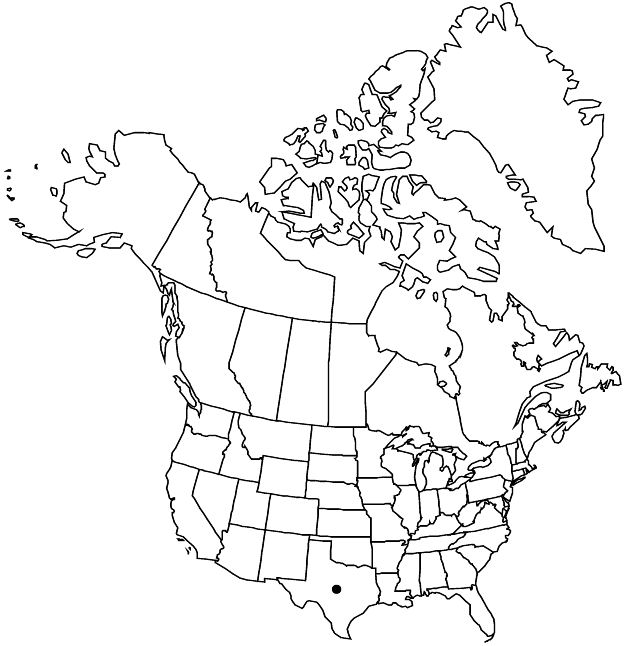Crataegus greggiana
Bull. Torrey Bot. Club 36: 511. 1909.
Shrubs or trees, 40–80 dm. Stems: twigs: new growth densely appressed-pubescent, 1-year old gray, sometimes ± shiny, 2-years old and older dull gray; thorns on twigs numerous, ± recurved, 2-years old shiny black, 2.5–5 cm. Leaves: petiole 6–12 mm, length 25–33% blade, densely pubescent, eglandular; blade mid green, broadly ovate (base ± truncate) or broadly elliptic to rhombic-elliptic (base cuneate), 2.5–4(–5) cm, lobes obscure or 1–3 per side, sinuses very shallow, lobe apex acute, margins serrate, teeth tips glandular, especially proximally, veins 4–6 per side, abaxial surface glabrate to tomentose, pubescent on veins, adaxial appressed-hairy young, becoming scabrous or glabrescent. Inflorescences 3–8-flowered; branches tomentose; bracteoles caducous, linear, membranous, margins stipitate-glandular, pubescent. Flowers 15 mm diam.; hypanthium tomentose; sepals narrowly triangular, 4–6 mm, margins glandular-serrate; stamens 10[–20], anthers pink or rose; styles 5. Pomes brick red to bright red, suborbicular, 7–11 mm diam., pubescent; sepals spreading or erose; pyrenes 5. 2n = 68.
Phenology: Flowering Apr; fruiting Sep–Oct.
Habitat: Deciduous scrub, pastures, pinyon woodlands
Elevation: 300–700 m
Distribution

Tex., Mexico (Coahuila, Nuevo León).
Discussion
Of conservation concern.
Crataegus greggiana is a scarce plant of the Edwards Plateau of Texas; it is more common and variable in the Mexican Sierra Madre Oriental. It usually occurs in more xeric habitats than most Crataegus.
The stamens are always 10 in Texas but are often 20 in Mexico. Crataegus uvaldensis is a particularly tomentose form. A somewhat similar local species of the Edwards Plateau is 168. C. turnerorum (see there for differences).
Selected References
None.